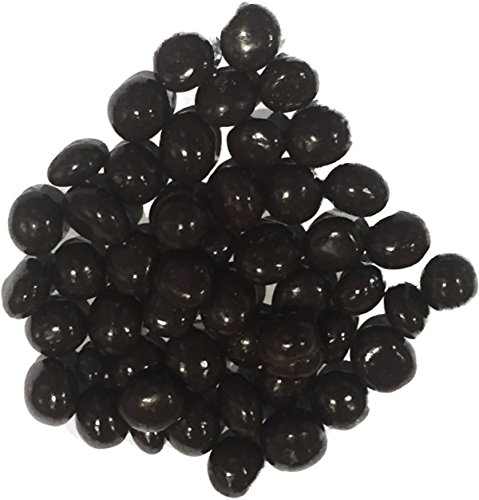10 Healthy Coffee Bean Habits

The Benefits and Side Effects of Coffee Beans
Coffee beans can provide a wide range of health benefits, like improved cognitive function and lower risks of heart disease. Too many beans can cause anxiety and insomnia.
The flavor of a coffee may vary depending on the location, elevation and cultivation techniques. The plant's species also affects its taste.
Origin
The seeds of the tropical evergreen shrub that produces coffee beans are called coffee beans. They are roasted and ground to make the most widely consumed coffee beverage that is enjoyed all over the world. Coffee is the third most loved drink in the world, and is one of the most lucrative international commodities. The caffeine alkaloid is responsible for the energizing effects of coffee.
The most commonly accepted tale of the coffee's beginnings is that of an Abyssinian goat herder called Kaldi who noticed his animals getting lively after eating berries of certain plants. The berries he ate proved to be energetic and started cultivating the plant.
In the 16th century, coffee was transported eastward to the Arabian Peninsula, where it was cultivated in the Yemeni area. dark roast coffee beans grew further, and the first coffee houses opened. These cafes were opposed to the taverns found in Europe and centered on fast-paced and deep thinking.
The majority of coffee produced today comes from two varieties of plants, called Arabica and Robusta. They are most productive in the Bean Belt region, which is a band of land that lies between the Tropic of Cancer & Capricorn.
Types
There are a myriad of varieties of coffee beans, and each has its own unique flavor profile. The region where coffee beans are grown can also affect their flavor. For example, Ethiopian coffee is known for its floral and citrus notes, while Colombian beans are full-bodied and possess a balanced acidity.
Coffee beans are harvested in a variety of ways and some are further processed to enhance the flavor. Some are dried and roasting, whereas others are frozen, and then ground later. They can also be polished to remove the silver skin that is atop the bean, which is known as depulping. The beans are then sorted and graded according to weight and size and any imperfections are removed either by hand or machine.

Robusta plants are more resistant to pests and can be found at lower elevations than Arabica plants. They are also more caffeine-rich than Arabica beans and are often used in instants or blends. A increasing number of coffee drinkers are recognizing the distinctive flavor and superior single origin coffees.
Flavor
Coffee beans can be infused with a variety flavors that add new dimension to dessert, drinks and food recipes. The type of bean that is suitable for a particular recipe will depend on the flavor profile you want and how the recipe will be executed.
The coffee bean is actually a grain of proteins, minerals and lipids as well as pollysaccharides. The seed is protected by silverskin that is removed when roasting. When the seeds are exposed to heat they begin the process of forming a chain reaction that produce their flavor, aroma and color.
The coffee purists believe that natural coffee flavors are best. It is possible to flavor roast coffee beans with artificial flavors. To enhance the flavor of a batch roaster, it sprays flavor-infused oil on the beans. The flavored oil is then blended into the beans until it's evenly distributed. The beans are then cool, ground and packaged. The flavored coffee beans can be brewed to make the perfect cup of coffee, or eaten as a snack without brewing.
Health benefits
Coffee beans are a good source of caffeine, a potent stimulant that can boost your mood and boost energy levels. They also contain phenolics, which are antioxidants that protect cells from damage. According to the National Institutes of Health, these compounds are linked to the lower risk of developing heart disease and cancer.
The seeds of the coffee plant can be found in an apple that looks like cherries. The fruit usually has two seeds that are arranged in a flat fashion against each other. Some fruits, however, have only one seed, which is called a peaberry. Peaberries make a weaker, less flavorful cup of coffee.
Roasting coffee beans changes their taste, making them more pleasing to the taste buds. Roasting the beans makes them easier to digest by the body.
The phenolic compounds found in coffee beans are known to inhibit the formation of glucose in the liver, and can lower cholesterol levels in the blood. They can also lower the risk of non-alcoholic fat cirrhosis and non-alcoholic liver disease. Coffee beans are an excellent source of potassium, riboflavin and B vitamins, and are also rich in fiber.
Side effects
The seeds of the coffee plant are often roasted and brewed to create an extremely popular beverage. Coffee consumption is linked to a decreased chance of developing type 2 diabetes and liver disease. However, the caffeine in coffee that is brewed can cause adverse effects such as jitters, high blood pressure, and heartburn for some people. Green coffee bean extract, a non-caffeinated alternative is proven to provide some of the same benefits, but without the negative effects associated with caffeine.
Coffee beans contain a variety of nonvolatile and volatile chemicals that protect them from oxidation, insects, and other diseases. These chemicals also contribute to their flavor. Nonvolatile compounds form waxy layers on the coffee beans. This coating helps to keep the beans hydrated and prevents insects from eating the beans.
Roasting coffee beans converts the fatty acids into energy. This energy can boost mental performance. It also promotes the release of adrenaline, a hormone which prepares the body for physical exercise. In addition the chlorogenic acid contained in green coffee beans could reduce fat absorption and slow down sugar release from the digestive tract.
